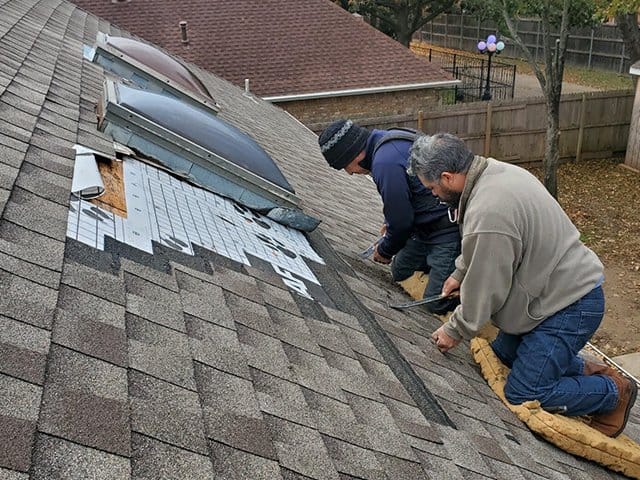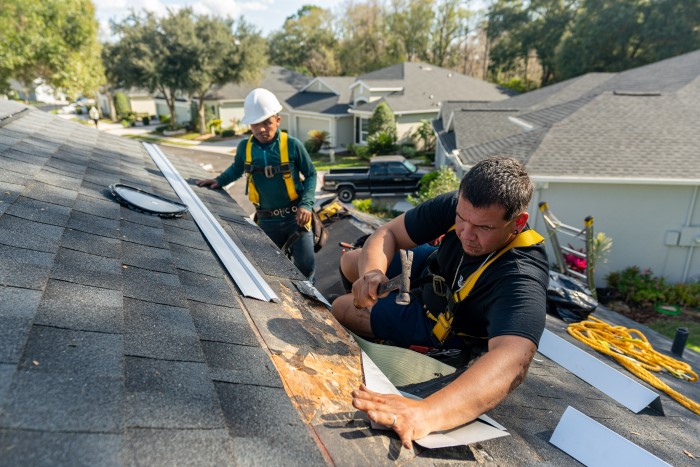Roofing Companies Oahu: Relied On Experts for Your Roofing Requirements
Roofing Companies Oahu: Relied On Experts for Your Roofing Requirements
Blog Article
Comprehending the Different Types of Roofing Systems: A Comprehensive Guide for Homeowners
With a selection of choices-- varying from the typical gable to the contemporary flat-- each type provides unique benefits and obstacles that need to align with the property owner's environmental factors to consider and details requirements. As we discover the intricacies of various roofing system kinds, it comes to be obvious that one dimension does not fit all; the appropriate choice may shock you.
Gable Roofs
Gable roof coverings, defined by their triangular form, are amongst one of the most popular roof covering designs as a result of their simplicity and effectiveness in dropping water and snow. This design features 2 sloping sides that meet at a ridge, enabling reliable drain and lessening the danger of water buildup. The high pitch commonly related to gable roofing systems improves their capacity to handle hefty precipitation, making them suitable for numerous climates.
In enhancement to their functional advantages, saddleback roofs provide visual convenience. They can be adapted to various building styles, from typical to modern homes. The design can additionally accommodate extra functions such as dormer home windows, which enhance natural light and air flow in the attic room area.
Additionally, gable roofing systems give enough space for insulation, adding to power effectiveness. House owners can pick from a variety of roof covering products, including asphalt tiles, metal, and ceramic tiles, better improving customization options.
Despite their benefits, gable roofing systems may require additional assistance in areas prone to high winds or heavy snowfall. Generally, the gable roof covering continues to be a preferred option due to its blend of performance, sturdiness, and visual charm.
Apartment Roofs
Flat roofings are frequently acknowledged for their minimal style and sensible applications, particularly in industrial and commercial setups (oahu roofing). These roof coverings feature a virtually horizontal or straight surface area, which permits for easy construction and functional space usage. While they may do not have the visual allure of angled roofs, level roofing systems provide numerous advantages, particularly in urban environments where optimizing area is essential
One of the main advantages of flat roof coverings is their access. Home owners can utilize the roofing room for various objectives, such as roof gardens, balconies, or photovoltaic panel installments. In addition, flat roofs are commonly more cost-effective to mount and maintain compared to their sloped equivalents, as they require less products and labor.
Typical materials used for flat roofing systems include built-up roofing (BUR), modified asphalt, and single-ply membrane layers, each offering distinct advantages. On the whole, flat roofings offer as a practical and adaptable selection for lots of house owners and businesses alike.
Hip Roofs
Hip roofings are identified by their sloped sides that assemble on top, forming a ridge. This style stands out from gable roofs, as all 4 sides of a hip roofing slope downwards towards the walls, giving a more secure framework. The angle of the slopes can vary, enabling adaptability in architectural visual appeals and functionality.
Among the key benefits of hip roofings is their capacity to endure heavy winds and damaging weather. The sloped surfaces enable far better water drainage, lowering the risk of leakages and water damage. Additionally, hip roofings provide raised attic area, which can be used for storage and even converted right into habitable areas.
However, building a hip roof can be much more complex and pricey than easier roof kinds, such as gable roofs. The added material and labor entailed in developing the slopes and ensuring proper structural stability can lead to higher expenditures. In spite of these disadvantages, lots of homeowners favor hip roofings for their sturdiness, visual charm, and potential for power efficiency.
Mansard Roofings
Mansard roofing systems, frequently identified by their distinct four-sided layout, feature 2 inclines on each side, with the lower incline being steeper than the top. This architectural design, originating from France in the 17th century, is not only aesthetically enticing but useful, as it makes the most of the functional room in the upper floorings of a building. The high reduced slope allows for even more headroom, making it a suitable option for loft spaces or attics, which can be exchanged living spaces.
Mansard roof coverings are identified by their flexibility, fitting different architectural styles, from typical to modern-day. websites They can be created with different materials, consisting of asphalt roof shingles, slate, or steel, offering property owners with a variety of options to suit their choices and budget plans. Additionally, the design enables the combination of dormer home windows, enhancing natural light and ventilation in the upper degrees.
However, it is vital to consider the prospective drawbacks. Mansard roofing systems may require more maintenance because of the intricacy of their design, and their steep inclines can be challenging for snow and rain overflow. In general, mansard roofings combine elegance with functionality, making them a preferred choice amongst home owners looking for distinct architectural attributes.
Dropped Roofing Systems
As homeowners progressively seek simplicity and functionality in their building styles, dropped roof coverings have actually emerged as a prominent choice. Defined by a solitary sloping aircraft, a shed roofing offers a minimal aesthetic that enhances numerous home designs, from modern to rustic.
Among the primary benefits of a shed roof is its simple building and construction, which usually converts to reduce labor and material expenses. This style allows for efficient water drainage, decreasing the risk of leaks and water damage. Additionally, the upright incline gives sufficient area for skylights, improving natural light within the interior.
Lost roof coverings additionally use versatility in regards to use. They can be efficiently integrated into enhancements, garages, or outside frameworks like sheds and structures. Furthermore, this roofing design can accommodate different roof materials, including metal, asphalt shingles, or perhaps green roofs, lining up with eco-friendly efforts.
Nonetheless, it is vital to think about regional climate conditions, as hefty snow lots might require adjustments to the roof's angle or framework. Generally, shed roof coverings offer a functional and visually pleasing alternative for property owners seeking to maximize performance without endangering design.
Conclusion


Gable roof coverings, identified by their triangular you can try this out form, are among the most popular roof styles due to their simplicity and efficiency in dropping water and snow. oahu roofing. The steep pitch typically associated with gable roofing systems enhances their capacity to deal with heavy precipitation, making them appropriate visit the site for different climates
While they might do not have the visual appeal of pitched roofing systems, level roofs supply many benefits, especially in urban environments where making the most of space is critical.

Report this page